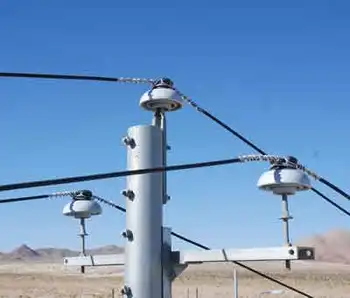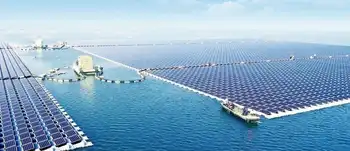Auto parts supplier retools for solar products
WINDSOR, ONTARIO - SunEdison, a major global player in the solar power industry, is close to finalizing a deal with a Windsor-area auto parts maker to produce solar racking systems for its projects in Canada and the U.S.
“Not only will we be supplying our Canadian jobs with that facility, we’ve been so impressed with the manufacturing expertise down there, and certainly the pricing, that we’ll actually be exporting racking from that facility to the U.S. later this year,” said Jason Gray, SunEdison’s country manager for Canada.
He would only say the plant is in Southwestern Ontario, but a source confirmed it is in the Windsor area.
The plant has done some retooling to produce the racks, though details of how many racks will be made and the number of jobs that will be preserved and added are still being worked out, Gray said. “In new manufacturing brought online because of the Green Energy Act, this will be one of the first to be exported to the U.S. on a large enough scale to be sort of interesting.”
Under OntarioÂ’s Green Energy Act, companies that want to get favourable prices for solar and wind energy must produce the majority of their installations and equipment in the province.
It appears it is also getting solar companies interested in using Ontario as a manufacturing base for U.S. projects.
Windsor-based Great Lakes Energy Inc. reached an agreement in the last 10 days with another American company, Advanced Green Technologies, to build solar racking systems, said president John Millson. The work will be done at WindsorÂ’s Southwestern Manufacturing Inc.
The systems will be for projects in Ontario and the U.S., Millson said. He estimated the deal could lead to 50 to 60 new jobs at the two Windsor companies.
The significance of SunEdison establishing ties with Windsor is that it is a long-term global player in the industry. It develops, installs, finances and runs solar power generating projects, and already manages 350 solar electric power plants. It delivered more kilowatt hours of energy onto North American power grids than any other solar company in 2009.
In Ontario, SunEdison’s projects range from rooftop installations to large solar parks that produce enough electricity to power thousands of homes. It has a 9.1-megawatt solar park near Napanee in Eastern Ontario and will start construction on a similar-sized project in Chatham-Kent in July. It currently has 25 employees at its growing Toronto headquarters and another 300 workers — including contractors — at its projects in Ontario, Gray said.
SunEdison announced a deal with First Reserve Corp., one of the worldÂ’s largest private equity and energy infrastructure investors, for $1.5 billion to finance solar power projects. The first $167 million is being targeted at new construction in the United States, Canada, Italy and Spain.
SunEdison, which is a division of MEMC Electronic Materials Inc., isnÂ’t directly involved in much manufacturing, but wants to keep its racking technology in-house, Gray said.
“We do own some intellectual property in racking, so we do control that part of our supply chain quite closely,” he said. That’s why it closely scrutinized the bids it received when it put out a call for companies qualified to built the systems.
“We were thoroughly impressed with the responses throughout Ontario on the pricing we were getting back, the manufacturing expertise, and the ability and confidence to deliver. It became a pretty easy choice for us to have a racking manufacturer in Ontario,” Gray said.
Related News

U.S. power demand seen sliding 1% in 2023 on milder weather
WASHINGTON - U.S. power consumption is expected to slip about 1% in 2023 from the previous year as milder weather slows usage from the record high hit in 2022, the U.S. Energy Information Administration (EIA) said in its Short-Term Energy Outlook (STEO).
EIA projected that electricity demand is on track to slide to 4,000 billion kilowatt-hours (kWh) in 2023 from a historic high of 4,048 billion kilowatt-hours (kWh) in 2022, before rising to 4,062 billion kWh in 2024 as economic growth ramps up.
Less demand coupled with more electricity generation from cheap renewable power sources and lower natural gas prices is forecast…




